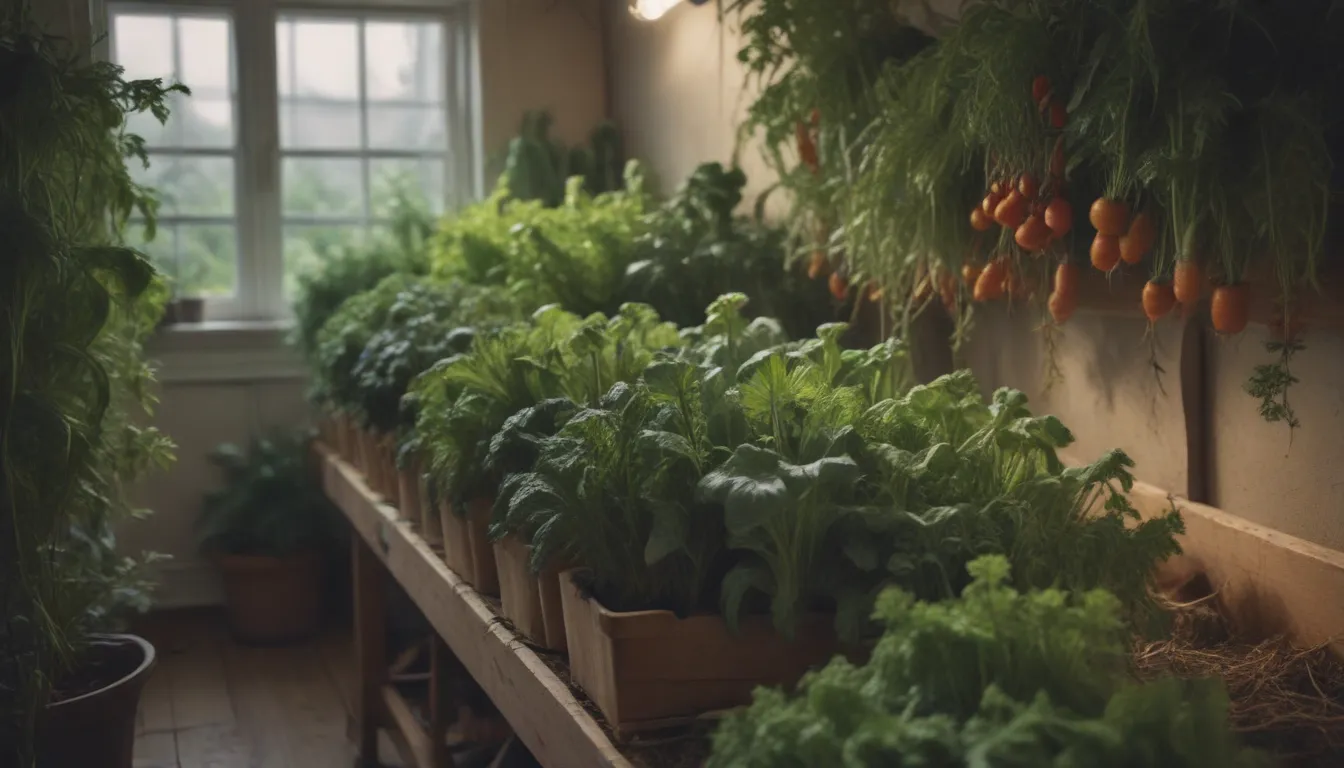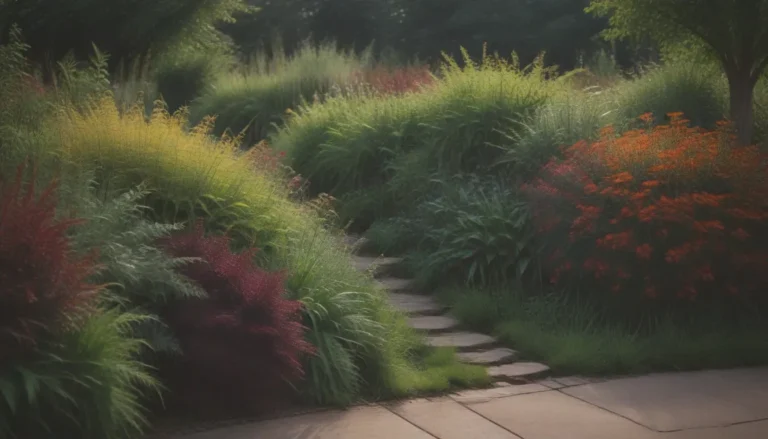Harvesting the Indoors: A Guide to Growing Vegetables Indoors Year-Round

Are you tired of having to give up on your love for gardening when the weather turns cold? Do you want to enjoy home-grown vegetables all year round? Well, it’s time to bring your gardening skills indoors! Growing vegetables indoors is not only a fun and rewarding activity, but it also ensures that you have access to fresh produce regardless of the season. With the right tools, knowledge, and a bit of patience, you can transform your indoor space into a thriving vegetable garden.
Tips for Growing Vegetables Indoors
Before you dive into indoor gardening, here are some essential tips to keep in mind:
- Supplemental Lighting: Indoors, vegetables may not receive enough natural sunlight. Consider using LED grow lights to provide the necessary light for optimal growth.
- Proper Watering: Ensure your plants are adequately watered, but be careful not to overwater them. Check the soil moisture regularly to prevent root rot.
- Container Size: Choose the right-sized container for each vegetable variety to allow for proper root growth.
- Temperature Control: Keep your indoor garden at the right temperature range for the vegetables you are growing. Different crops have varying temperature preferences.
- Soil Quality: Use high-quality potting soil to provide essential nutrients to your plants.
- Regular Maintenance: Monitor your plants regularly for pests, diseases, and nutrient deficiencies. Address any issues promptly to ensure healthy growth.
Growing Vegetables Indoors Without Sunlight
When growing vegetables indoors, one of the significant challenges is the lack of direct sunlight. In such cases, supplemental lighting becomes essential to ensure the plants receive adequate light for photosynthesis. LED grow lights are an excellent option for replicating the necessary sunlight for indoor plants. Consider the following tips when using artificial lighting:
- Choose the Right Color: Different LED light colors impact plant growth differently. Use red light for flowering plants and blue light for vegetables.
- Monitor Light Hours: Mimic natural sunlight by providing 8 to 16 hours of artificial light per day, depending on the plant’s requirements.
- Avoid Overexposure: Too much LED light can harm plants. Invest in a timer to regulate the light exposure and prevent damage.
Best Vegetables to Grow Indoors
When it comes to choosing vegetables for indoor gardening, some varieties are more suitable for indoor conditions than others. Here are some of the best vegetables to grow indoors:
Carrots
Carrots are low-maintenance vegetables that thrive in containers indoors. Opt for smaller carrot varieties for indoor growing, as they require less space and mature more quickly. Use a long container like a window box, keep the soil moist, and watch your carrots sprout within a few weeks.
- USDA Hardiness Zones: Varies
- Light: Bright, indirect light
- Soil: Well-draining potting mix
- Days to Maturity: Depends on the variety
Garlic Greens
Instead of discarding sprouting garlic cloves, plant them indoors to grow garlic greens. Harvest these flavorful greens when they reach 8 to 10 inches in length for a milder garlic flavor.
- USDA Hardiness Zones: Varies
- Light: Indirect sunlight
- Soil: Well-draining potting mix
- Days to Maturity: 2-3 weeks
Hot Peppers
Hot peppers thrive indoors and can be grown from seeds or transplanted from the garden. Provide at least 10 hours of light per day, and help with pollination by gently shaking the plants or using a cotton swab.
- USDA Hardiness Zones: Varies
- Light: Full sunlight
- Soil: Well-draining potting mix
- Days to Maturity: Depends on the variety
Lettuce
Lettuce is a fast-growing vegetable that requires shallow containers and moist soil. Harvest outer leaves regularly, allowing the plants to continue growing from the center.
- USDA Hardiness Zones: Varies
- Light: Partial shade
- Soil: Well-draining potting mix
- Days to Maturity: Depends on the variety
Microgreens
Microgreens are easy to grow indoors and add a burst of flavor to your dishes. Use a shallow tray filled with moist soil to grow a mix of seeds like beets, radishes, and kale.
- Light: Indirect sunlight
- Soil: Well-draining potting mix
- Days to Maturity: A few days
Scallions
Scallions are perfect for indoor growing and can be regrown from their root ends. Simply place the root end in water until roots develop, then transfer them to a potting mix.
- USDA Hardiness Zones: Varies
- Light: Indirect sunlight
- Soil: Well-draining potting mix
- Days to Maturity: Varies
Tomatoes
While tomatoes are tropical perennials, they can be grown indoors if provided with sufficient light and proper care. Hand-pollinate the flowers to ensure fruit production, and use a support system to prevent toppling.
- USDA Hardiness Zones: Varies
- Light: Full sunlight
- Soil: Well-draining potting mix
- Days to Maturity: Depends on the variety
Potatoes
Surprisingly, potatoes can be grown indoors in containers. Choose varieties that mature at different times for a continuous harvest, and provide full sunlight or artificial light.
- USDA Hardiness Zones: Varies
- Light: Full sunlight
- Soil: Well-draining potting mix
- Days to Maturity: Depends on the variety
Radishes
Quick-growing radishes thrive in containers indoors and add color to your salads. Plant them in stages for a continuous harvest throughout the season.
- USDA Hardiness Zones: Varies
- Light: Full sunlight
- Soil: Well-draining potting mix
- Days to Maturity: Depends on the variety
Herbs
Popular herbs like basil, oregano, and mint are ideal for indoor gardening. Plant them in a sunny spot and harvest regularly to encourage growth.
- USDA Hardiness Zones: Varies
- Light: Full sunlight
- Soil: Well-draining potting mix
- Days to Maturity: Depends on the variety
Kale
Choose a compact kale variety for indoor growing and provide sufficient light to prevent scorching. Keep the room temperature between 60 and 70 degrees F for optimal growth.
- USDA Hardiness Zones: Varies
- Light: Indirect sunlight
- Soil: Well-draining potting mix
- Days to Maturity: 3 months
Celery
Growing celery from the base of the stalk is a fun indoor project that yields fast results. Harvest the leaves as needed, or plant it in potting soil for continuous growth.
- USDA Hardiness Zones: Varies
- Light: Indirect sunlight
- Soil: Well-draining potting mix
- Days to Regrow Leaves: Varies
Arugula
Compact and fast-growing, arugula is perfect for indoor cultivation. Plant seeds every few weeks for a continuous harvest of fresh greens.
- USDA Hardiness Zones: Varies
- Light: Indirect sunlight
- Soil: Well-draining potting mix
- Days to Maturity: Varies
Choosing Vegetables to Grow Indoors
For beginners, starting with lettuces, microgreens, and herbs is a wise choice due to their easy maintenance and high success rate. While tomatoes and peppers require more time and resources, ornamental peppers can also be grown indoors for a unique touch to your indoor garden.
Conclusion
With the right knowledge and tools, you can transform any indoor space into a flourishing vegetable garden. Experiment with different vegetables, herbs, and greens to find what works best for your indoor conditions. Remember to provide adequate light, water, and care to ensure the success of your indoor garden. Happy growing!





